Pengcheng Wang
HD3C: Efficient Medical Data Classification for Embedded Devices
Sep 18, 2025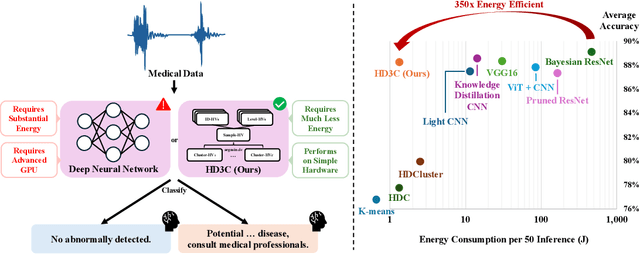
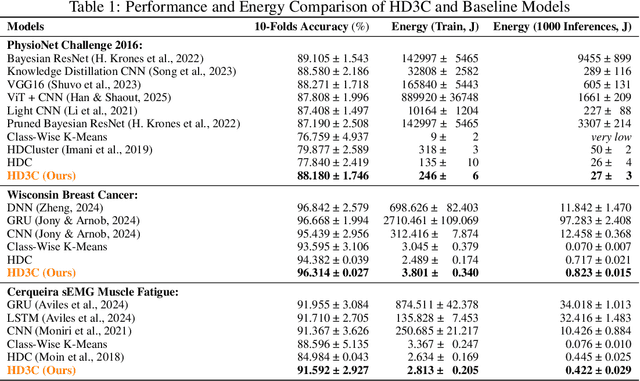

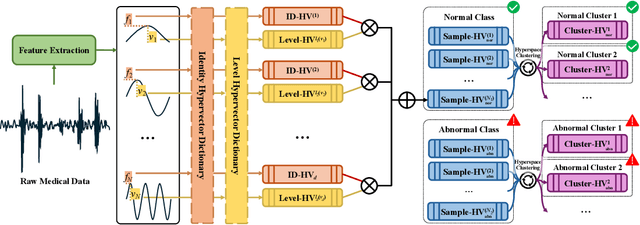
Abstract:Energy-efficient medical data classification is essential for modern disease screening, particularly in home and field healthcare where embedded devices are prevalent. While deep learning models achieve state-of-the-art accuracy, their substantial energy consumption and reliance on GPUs limit deployment on such platforms. We present Hyperdimensional Computing with Class-Wise Clustering (HD3C), a lightweight classification framework designed for low-power environments. HD3C encodes data into high-dimensional hypervectors, aggregates them into multiple cluster-specific prototypes, and performs classification through similarity search in hyperspace. We evaluate HD3C across three medical classification tasks; on heart sound classification, HD3C is $350\times$ more energy-efficient than Bayesian ResNet with less than 1% accuracy difference. Moreover, HD3C demonstrates exceptional robustness to noise, limited training data, and hardware error, supported by both theoretical analysis and empirical results, highlighting its potential for reliable deployment in real-world settings. Code is available at https://github.com/jianglanwei/HD3C.
Interactive Hybrid Rice Breeding with Parametric Dual Projection
Jul 16, 2025Abstract:Hybrid rice breeding crossbreeds different rice lines and cultivates the resulting hybrids in fields to select those with desirable agronomic traits, such as higher yields. Recently, genomic selection has emerged as an efficient way for hybrid rice breeding. It predicts the traits of hybrids based on their genes, which helps exclude many undesired hybrids, largely reducing the workload of field cultivation. However, due to the limited accuracy of genomic prediction models, breeders still need to combine their experience with the models to identify regulatory genes that control traits and select hybrids, which remains a time-consuming process. To ease this process, in this paper, we proposed a visual analysis method to facilitate interactive hybrid rice breeding. Regulatory gene identification and hybrid selection naturally ensemble a dual-analysis task. Therefore, we developed a parametric dual projection method with theoretical guarantees to facilitate interactive dual analysis. Based on this dual projection method, we further developed a gene visualization and a hybrid visualization to verify the identified regulatory genes and hybrids. The effectiveness of our method is demonstrated through the quantitative evaluation of the parametric dual projection method, identified regulatory genes and desired hybrids in the case study, and positive feedback from breeders.
Residual Policy Gradient: A Reward View of KL-regularized Objective
Mar 14, 2025



Abstract:Reinforcement Learning and Imitation Learning have achieved widespread success in many domains but remain constrained during real-world deployment. One of the main issues is the additional requirements that were not considered during training. To address this challenge, policy customization has been introduced, aiming to adapt a prior policy while preserving its inherent properties and meeting new task-specific requirements. A principled approach to policy customization is Residual Q-Learning (RQL), which formulates the problem as a Markov Decision Process (MDP) and derives a family of value-based learning algorithms. However, RQL has not yet been applied to policy gradient methods, which restricts its applicability, especially in tasks where policy gradient has already proven more effective. In this work, we first derive a concise form of Soft Policy Gradient as a preliminary. Building on this, we introduce Residual Policy Gradient (RPG), which extends RQL to policy gradient methods, allowing policy customization in gradient-based RL settings. With the view of RPG, we rethink the KL-regularized objective widely used in RL fine-tuning. We show that under certain assumptions, KL-regularized objective leads to a maximum-entropy policy that balances the inherent properties and task-specific requirements on a reward-level. Our experiments in MuJoCo demonstrate the effectiveness of Soft Policy Gradient and Residual Policy Gradient.
TD-M(PC)$^2$: Improving Temporal Difference MPC Through Policy Constraint
Feb 05, 2025



Abstract:Model-based reinforcement learning algorithms that combine model-based planning and learned value/policy prior have gained significant recognition for their high data efficiency and superior performance in continuous control. However, we discover that existing methods that rely on standard SAC-style policy iteration for value learning, directly using data generated by the planner, often result in \emph{persistent value overestimation}. Through theoretical analysis and experiments, we argue that this issue is deeply rooted in the structural policy mismatch between the data generation policy that is always bootstrapped by the planner and the learned policy prior. To mitigate such a mismatch in a minimalist way, we propose a policy regularization term reducing out-of-distribution (OOD) queries, thereby improving value learning. Our method involves minimum changes on top of existing frameworks and requires no additional computation. Extensive experiments demonstrate that the proposed approach improves performance over baselines such as TD-MPC2 by large margins, particularly in 61-DoF humanoid tasks. View qualitative results at https://darthutopian.github.io/tdmpc_square/.
Human-Guided Image Generation for Expanding Small-Scale Training Image Datasets
Dec 24, 2024



Abstract:The performance of computer vision models in certain real-world applications (e.g., rare wildlife observation) is limited by the small number of available images. Expanding datasets using pre-trained generative models is an effective way to address this limitation. However, since the automatic generation process is uncontrollable, the generated images are usually limited in diversity, and some of them are undesired. In this paper, we propose a human-guided image generation method for more controllable dataset expansion. We develop a multi-modal projection method with theoretical guarantees to facilitate the exploration of both the original and generated images. Based on the exploration, users refine the prompts and re-generate images for better performance. Since directly refining the prompts is challenging for novice users, we develop a sample-level prompt refinement method to make it easier. With this method, users only need to provide sample-level feedback (e.g., which samples are undesired) to obtain better prompts. The effectiveness of our method is demonstrated through the quantitative evaluation of the multi-modal projection method, improved model performance in the case study for both classification and object detection tasks, and positive feedback from the experts.
Entropy-Regularized Process Reward Model
Dec 15, 2024Abstract:Large language models (LLMs) have shown promise in performing complex multi-step reasoning, yet they continue to struggle with mathematical reasoning, often making systematic errors. A promising solution is reinforcement learning (RL) guided by reward models, particularly those focusing on process rewards, which score each intermediate step rather than solely evaluating the final outcome. This approach is more effective at guiding policy models towards correct reasoning trajectories. In this work, we propose an entropy-regularized process reward model (ER-PRM) that integrates KL-regularized Markov Decision Processes (MDP) to balance policy optimization with the need to prevent the policy from shifting too far from its initial distribution. We derive a novel reward construction method based on the theoretical results. Our theoretical analysis shows that we could derive the optimal reward model from the initial policy sampling. Our empirical experiments on the MATH and GSM8K benchmarks demonstrate that ER-PRM consistently outperforms existing process reward models, achieving 1% improvement on GSM8K and 2-3% improvement on MATH under best-of-N evaluation, and more than 1% improvement under RLHF. These results highlight the efficacy of entropy-regularization in enhancing LLMs' reasoning capabilities.
Residual-MPPI: Online Policy Customization for Continuous Control
Jul 02, 2024Abstract:Policies learned through Reinforcement Learning (RL) and Imitation Learning (IL) have demonstrated significant potential in achieving advanced performance in continuous control tasks. However, in real-world environments, it is often necessary to further customize a trained policy when there are additional requirements that were unforeseen during the original training phase. It is possible to fine-tune the policy to meet the new requirements, but this often requires collecting new data with the added requirements and access to the original training metric and policy parameters. In contrast, an online planning algorithm, if capable of meeting the additional requirements, can eliminate the necessity for extensive training phases and customize the policy without knowledge of the original training scheme or task. In this work, we propose a generic online planning algorithm for customizing continuous-control policies at the execution time which we call Residual-MPPI. It is able to customize a given prior policy on new performance metrics in few-shot and even zero-shot online settings. Also, Residual-MPPI only requires access to the action distribution produced by the prior policy, without additional knowledge regarding the original task. Through our experiments, we demonstrate that the proposed Residual-MPPI algorithm can accomplish the few-shot/zero-shot online policy customization task effectively, including customizing the champion-level racing agent, Gran Turismo Sophy (GT Sophy) 1.0, in the challenging car racing scenario, Gran Turismo Sport (GTS) environment. Demo videos are available on our website: https://sites.google.com/view/residual-mppi
Dim Small Target Detection and Tracking: A Novel Method Based on Temporal Energy Selective Scaling and Trajectory Association
May 15, 2024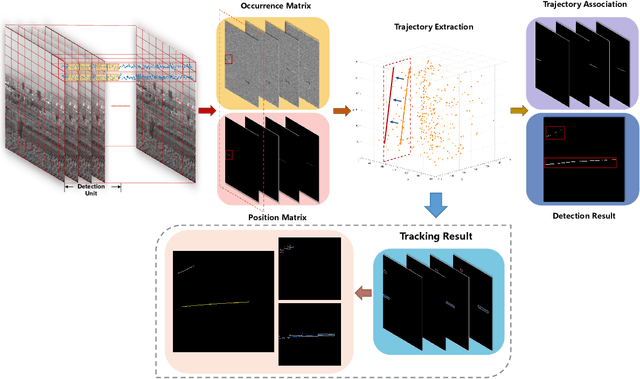
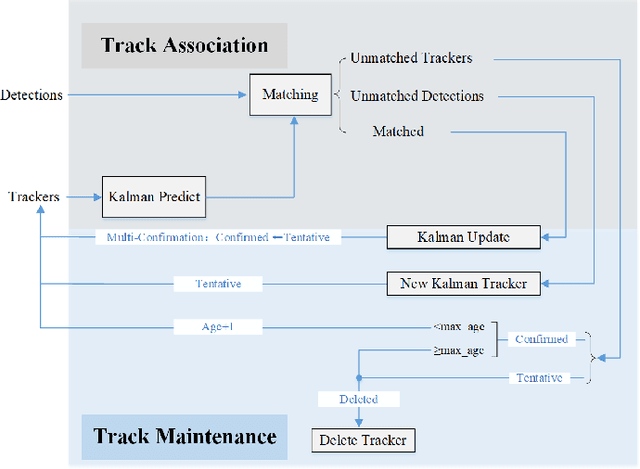
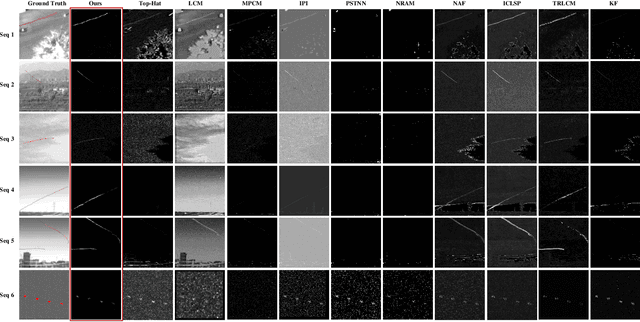
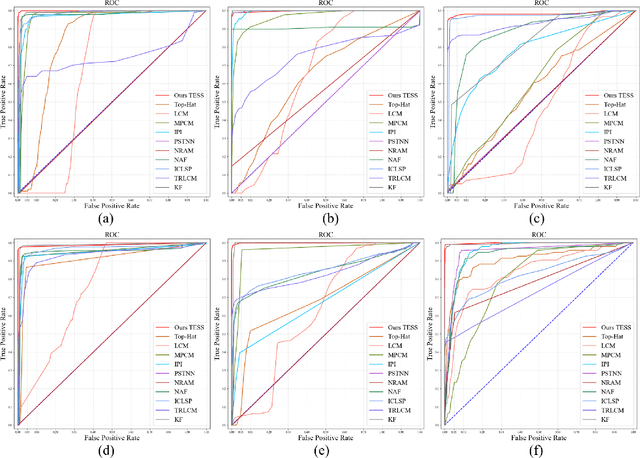
Abstract:The detection and tracking of small targets in passive optical remote sensing (PORS) has broad applications. However, most of the previously proposed methods seldom utilize the abundant temporal features formed by target motion, resulting in poor detection and tracking performance for low signal-to-clutter ratio (SCR) targets. In this article, we analyze the difficulty based on spatial features and the feasibility based on temporal features of realizing effective detection. According to this analysis, we use a multi-frame as a detection unit and propose a detection method based on temporal energy selective scaling (TESS). Specifically, we investigated the composition of intensity temporal profiles (ITPs) formed by pixels on a multi-frame detection unit. For the target-present pixel, the target passing through the pixel will bring a weak transient disturbance on the ITP and introduce a change in the statistical properties of ITP. We use a well-designed function to amplify the transient disturbance, suppress the background and noise components, and output the trajectory of the target on the multi-frame detection unit. Subsequently, to solve the contradiction between the detection rate and the false alarm rate brought by the traditional threshold segmentation, we associate the temporal and spatial features of the output trajectory and propose a trajectory extraction method based on the 3D Hough transform. Finally, we model the trajectory of the target and propose a trajectory-based multi-target tracking method. Compared with the various state-of-the-art detection and tracking methods, experiments in multiple scenarios prove the superiority of our proposed methods.
Active Prompting with Chain-of-Thought for Large Language Models
Feb 26, 2023



Abstract:The increasing scale of large language models (LLMs) brings emergent abilities to various complex tasks requiring reasoning, such as arithmetic and commonsense reasoning. It is known that the effective design of task-specific prompts is critical for LLMs' ability to produce high-quality answers. In particular, an effective approach for complex question-and-answer tasks is example-based prompting with chain-of-thought (CoT) reasoning, which significantly improves the performance of LLMs. However, current CoT methods rely on a fixed set of human-annotated exemplars, which are not necessarily the most effective examples for different tasks. This paper proposes a new method, Active-Prompt, to adapt LLMs to different tasks with task-specific example prompts (annotated with human-designed CoT reasoning). For this purpose, we propose a solution to the key problem of determining which questions are the most important and helpful ones to annotate from a pool of task-specific queries. By borrowing ideas from the related problem of uncertainty-based active learning, we introduce several metrics to characterize the uncertainty so as to select the most uncertain questions for annotation. Experimental results demonstrate the superiority of our proposed method, achieving state-of-the-art on eight complex reasoning tasks. Further analyses of different uncertainty metrics, pool sizes, zero-shot learning, and accuracy-uncertainty relationship demonstrate the effectiveness of our method. Our code will be available at https://github.com/shizhediao/active-prompt.
Multi-Sem Fusion: Multimodal Semantic Fusion for 3D Object Detection
Dec 10, 2022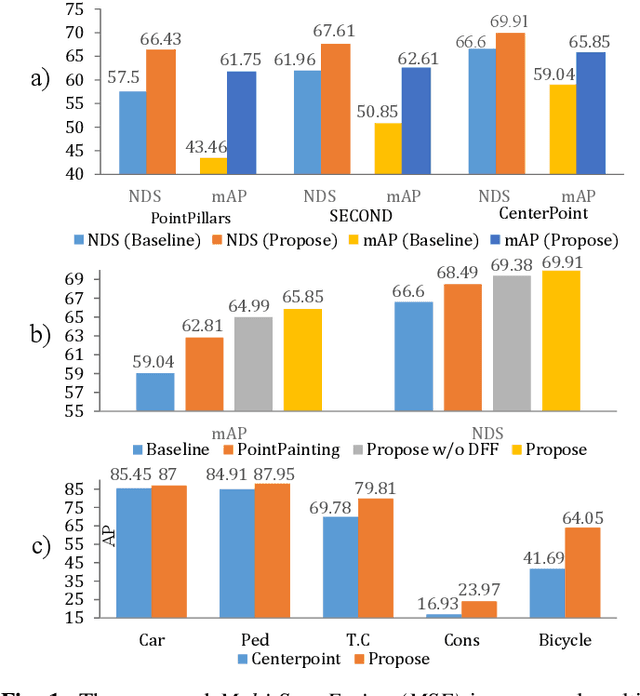
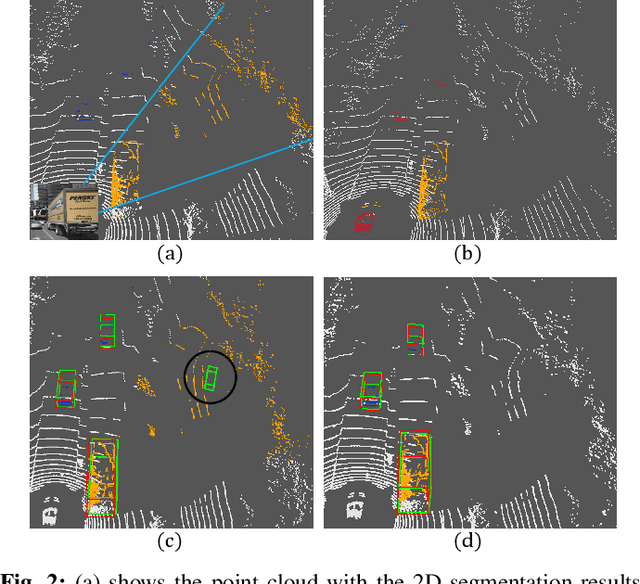


Abstract:LiDAR-based 3D Object detectors have achieved impressive performances in many benchmarks, however, multisensors fusion-based techniques are promising to further improve the results. PointPainting, as a recently proposed framework, can add the semantic information from the 2D image into the 3D LiDAR point by the painting operation to boost the detection performance. However, due to the limited resolution of 2D feature maps, severe boundary-blurring effect happens during re-projection of 2D semantic segmentation into the 3D point clouds. To well handle this limitation, a general multimodal fusion framework MSF has been proposed to fuse the semantic information from both the 2D image and 3D points scene parsing results. Specifically, MSF includes three main modules. First, SOTA off-the-shelf 2D/3D semantic segmentation approaches are employed to generate the parsing results for 2D images and 3D point clouds. The 2D semantic information is further re-projected into the 3D point clouds with calibrated parameters. To handle the misalignment between the 2D and 3D parsing results, an AAF module is proposed to fuse them by learning an adaptive fusion score. Then the point cloud with the fused semantic label is sent to the following 3D object detectors. Furthermore, we propose a DFF module to aggregate deep features in different levels to boost the final detection performance. The effectiveness of the framework has been verified on two public large-scale 3D object detection benchmarks by comparing with different baselines. The experimental results show that the proposed fusion strategies can significantly improve the detection performance compared to the methods using only point clouds and the methods using only 2D semantic information. Most importantly, the proposed approach significantly outperforms other approaches and sets new SOTA results on the nuScenes testing benchmark.
 Add to Chrome
Add to Chrome Add to Firefox
Add to Firefox Add to Edge
Add to Edge